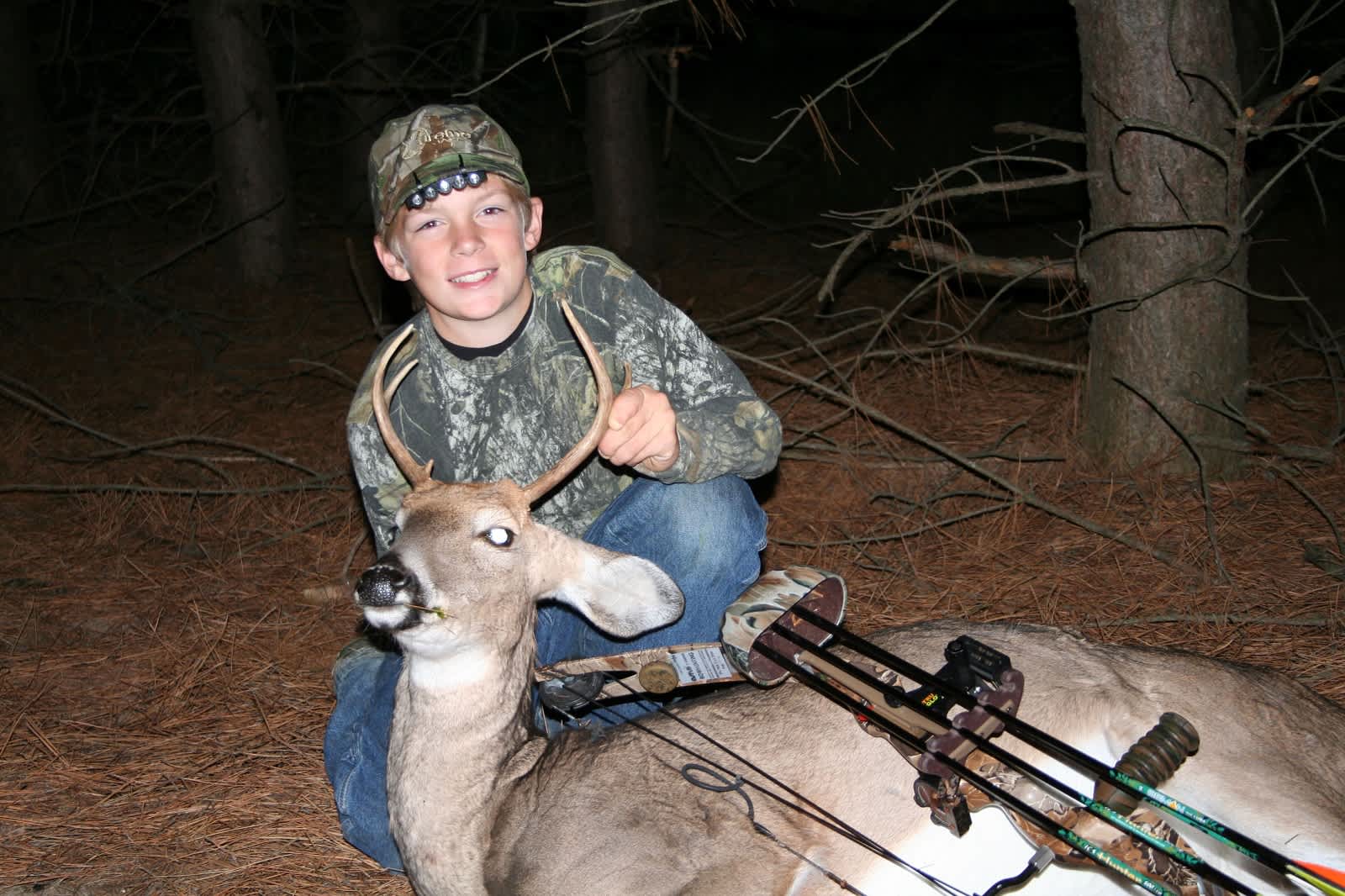Six Effective Ground Blind Hunting Strategies
Bernie Barringer 12.16.13

My son Dawson was 12 years old, and he was sitting beside me in a ground blind. In his pocket was his very first archery deer tag. It was a few days into Minnesota’s early archery season and we felt ready. We already had a few does out in the alfalfa field just out of range. When a yearling buck stepped out of the pine trees only 18 yards away, I whispered to Dawson, cautioning him to move slowly as he got his bow into position.
He carefully drew his bow as the buck looked out into the field, observing the does’ behavior. The shot looked good, but we phoned Mom and Dawson’s younger brother Sterling for help in the trailing and recovery.

Bowhunting out of a ground blind is high on the adrenaline value chart. The action is up close and personal. Hunting at eye level is exhilarating, but there is little margin for error. I have learned a few things over the years that have really helped me be more successful in hunting from ground blinds. Here are six keys to beating the deer’s senses.
Put blinds out early and brush them in well
Everyone who has used pop-up blinds for any length of time has had experience seeing deer spooked by them. Deer know every inch of their living area. Seeing a new structure where there hasn’t been one before is a cause for alarm. It takes about a week to 10 days for deer to become comfortable around a blind sitting in their feeding, traveling, or bedding area. I like to put blinds out early and brush them in well. It seems to really help calm the deer down if the outline of the blind is broken up by natural vegetation. You don’t have to totally cover the blind, just use plenty of cover so it no longer looks like a blind.
Only open the window on one side
Deer pick up any movement and if you have a window open behind you, they will see your silhouette and you will not be able to move at all. Only open the window on the side that you expect to shoot from.

Wear black
Many hunters have spent good money on quality camouflage, but in a ground blind, nothing beats black and lots of it. A black shirt, black hat, and even a black face mask will help you avoid being detected. With little light inside the blind, black makes it nearly impossible for the deer to pick you out.
Put the blind near some “structure”
One way to get around the whitetails’ natural fear of the ground blind is to put it near something that the deer are already accustomed to. I have a friend who placed his blind near some abandoned farm machinery and killed a buck the first night out. Placing the blind next to a large brushpile, thicket, or heavy row of bushes can help it become a natural part of the landscape. Blinds that are sitting out in the open get the deers’ attention far more than those that are part of the landscape.
Use a decoy
Deer decoys are attractive to whitetails and often bring them in for a closer look or stop them for a shot opportunity, but decoys also serve the purpose of being a distraction. A decoy can cause a deer to settle down and feel more comfortable and the decoy becomes the focus of their attention so the blind is not.

I like to use a buck decoy with one antler, so even smaller bucks do not feel challenged. Does settle down and larger bucks are likely to move in for a confrontation. I have had a lot of positive experiences using a buck decoy in association with a blind.
Get comfortable
Fidgeting is a killer when you are hunting at eye level. Find a comfortable chair and organize your gear in such a way that you do not have to make a lot of movements in order to get a shot once a deer does appear. I like to have my bow stationed on a holder so I can quickly access it with minimal movement. My rangefinder sits beside me on a small table attached to my chair. I can set a book down and be ready to shoot quickly without drawing attention to myself.
Use these six tips to increase the odds that you can get a shot off when a deer appears. Hey, if a 12-year-old can do it, so can you!
Follow Bernie’s bowhunting adventures on his blog, bowhuntingroad.com.

